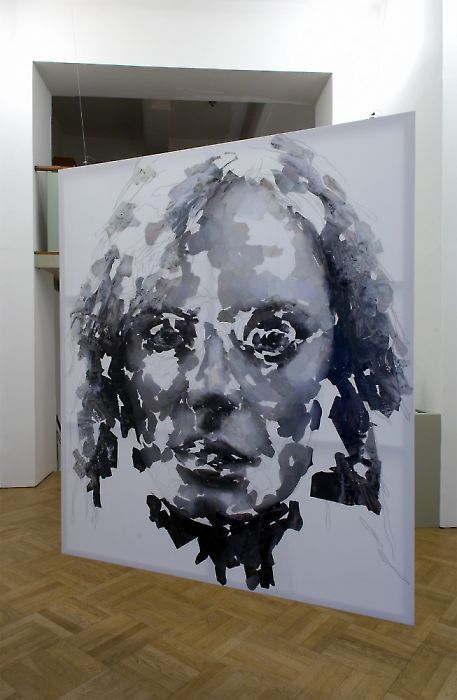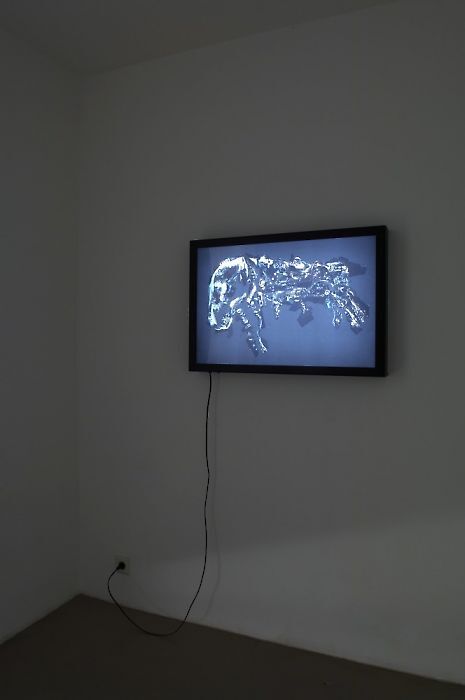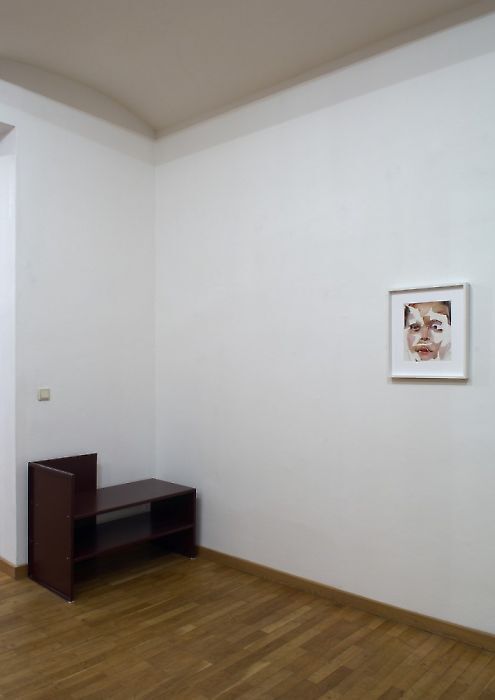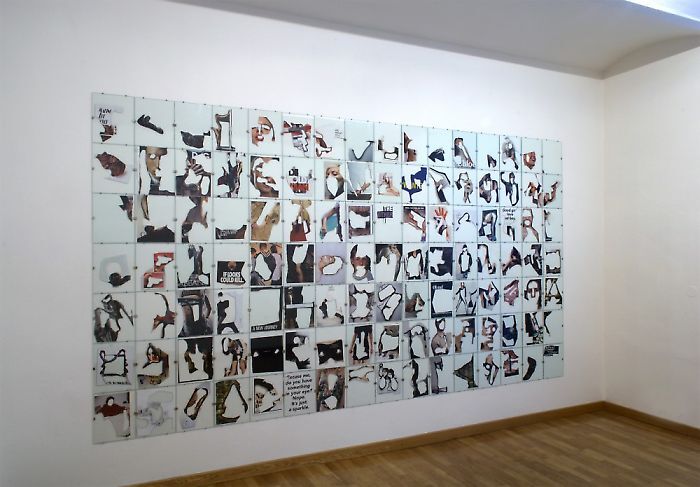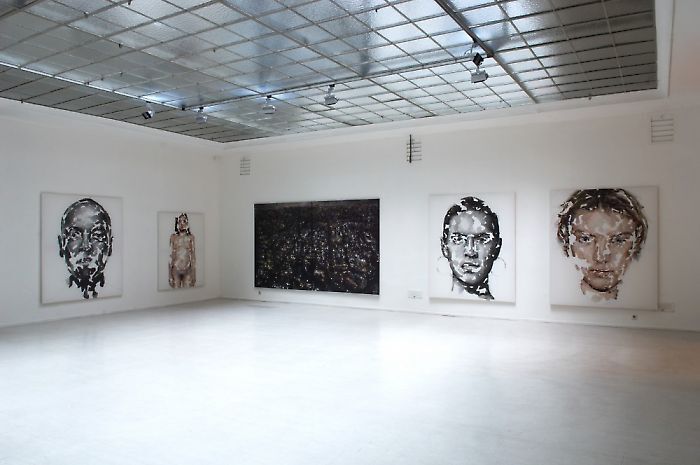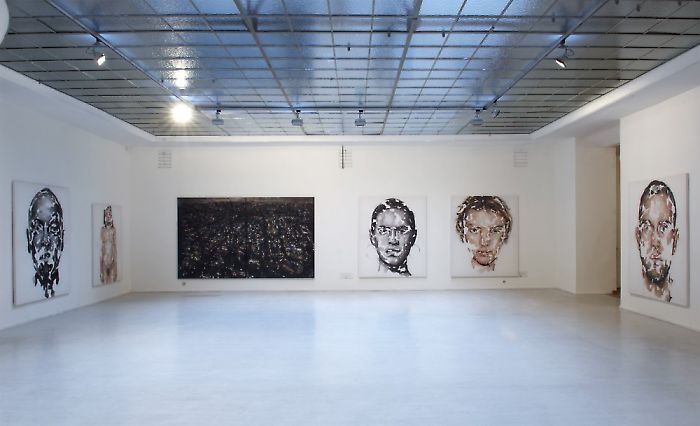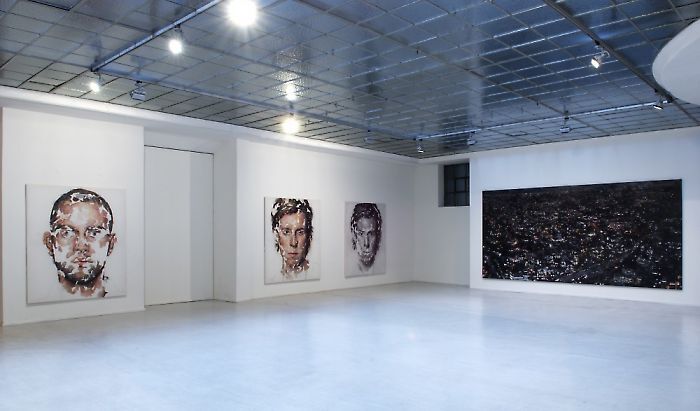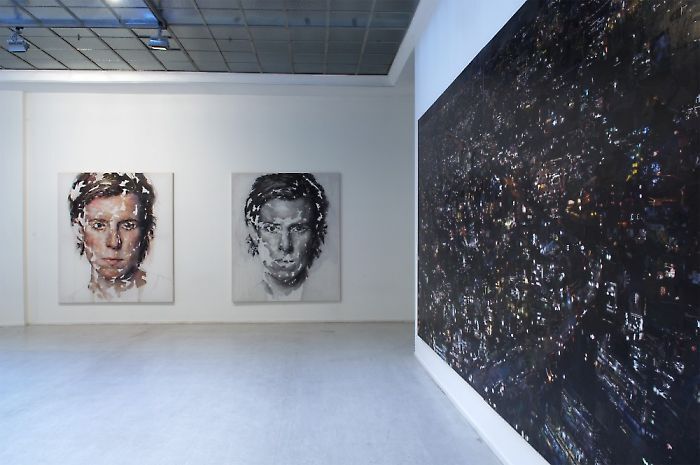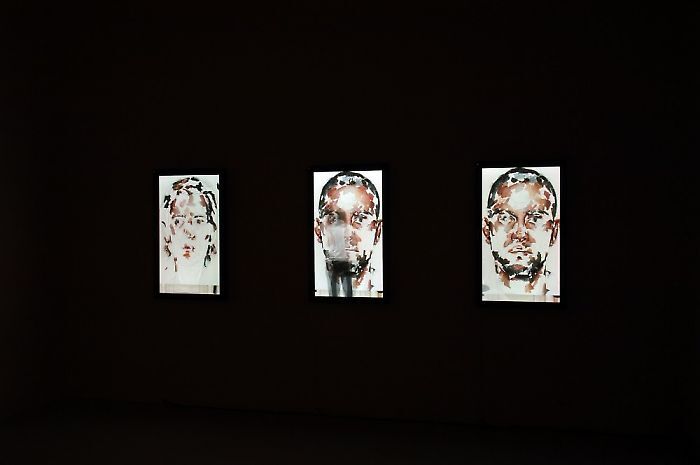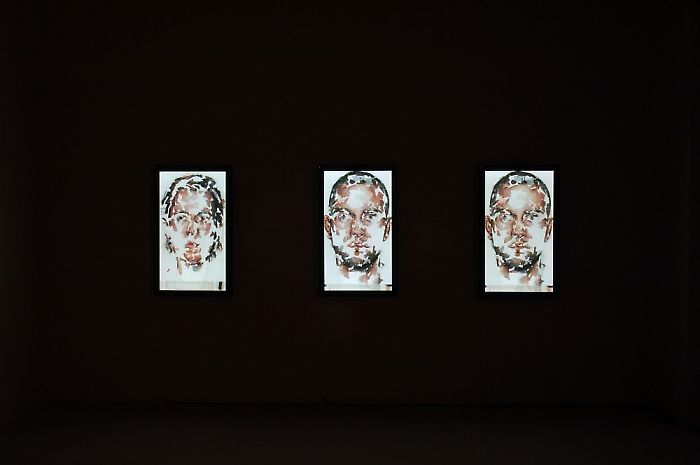—
Gabi Trinkaus
Mind the Gap
Gabi Trinkaus calls herself a "media thief." She cuts up glossy magazines into small pieces, using them to make collages of portraits and city landscapes that make reference to the aesthetics of advertising and the media. Common poses, ideals of beauty, and commodity offerings are picked up and sampled in the large works. One finds, contrary to its intended use, a foot as a fragment of the ear, hair as lips, or brand names as components of the hair. Needles not only often used to fix the individual parts, but also serve as a metaphor for cutting into the body and wounding. Instinctive omissions reveal the character of the body and psyche as injury in the fragmentation of the body or face. In so doing, the susceptibility, incompleteness, the unfulfilled wishes, and vulnerability of human existence become a central issue.
In these makeovers of faces and bodies, Trinkaus generates a superficially perfect form, enticing the beholder into a visual trap, consciously using media and advertising iconography as bait for the first glance. In approaching the pictures, and perceiving the visual detail, the second glance triggers a transformation in meaning.
By borrowing from an aesthetic associated with the world of advertising, anonymous faces, and common poses, Trinkaus plays with the idea of seduction in her work. With the help of the collage technique, she creates a Frankenstein-like resurrection of the dissected advertising subject. Like layers of make up pealing away, the faces and bodies seem to dissolve and reveal the mask-like character of our daily life performances.
The individual magazine parts with their various layers of meaning are as if inscribed in the faces, bodies, and landscapes that are constituted and point to the current neurological research discourse in the sense of Klaus Theweleit. Here, the body is understood alongside the brain as a storage medium; images, texts, and experiences that seem to be perceived beyond the encephalonic nervous system are remembered and imitated. Even if media production and visual manipulation processes are familiar and transparent, and their products can only be artificial and unreal, there is a general consensus about the ideal of a perfectly shaped and flawless body. In the media, the illusion of purchasable beauty, style, and happiness is created that generates an atmosphere of wishing: everything becomes a commodity. Actual appearances, life models, or personal taste become secondary in realities in which plastic surgery is given its own television series and casting and celebrity shows are dedicated to the cult of stardom and beauty.
Brand names and their images offer orientation in the increasingly complex anything goes society and create a confidence in our own choice among various commodity offerings and their images. With the help of readymade products, life advisors, and lifestyle trends, an apparently simple, comfortable shaping of life is possible, a kind of convenience lifestyle analogous to convenience food.
Faces and bodies prepared with professional styling and touched up in editing programs that in their perfection pretend aesthetic completion and a perfect aesthetic remain virtual images that are not seen as real, but realistic. But to correspond to this norm, an average attractiveness is generated with the help of susceptible techniques like plastic surgery. In the portraits of Gabi Trinkaus, often numerous layers can be recognized while other areas are in turn left out, allowing us to see the fine outlines. These lines are reminiscent of nerves lying underneath the surface and at the same time the marks of surgical interventions, while the omission refers to the endogenous and exogenous vulnerability of our own physicality and identities.
In her urban landscapes, Gabi Trinkaus raises questions on our private and public identities, social roles, and room for action that find their way into the social and architectural space of urban environments. The brightness of the city views is fed from the offerings and supposedly glamorous world of flashing cameras of magazines. Between labels and text fragments, alongside champagne bottles, cars, and watches, pistols and handcuffs are woven into the large surface visual deceptions, pointing to the ambivalence of globalized life.
Between planes of industrial glass, Trinkaus processes the cut out material into a visual dramaturgy of her own. The cut outs generate with their brutal, humorous, or fearful images disturbing visual impressions that challenge us to combine the cut elements to a whole. As a counterpoint to our media dominated landscape, Trinkaus confronts us with ironically refracted collages loaded with visual symbolism, in which our reality is restaged in a disassembled fashion, and thus revealing its fetishization.
Inquiry
Please leave your message below.
